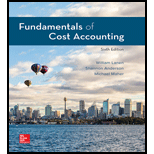
Concept explainers
International Transfer Prices
Skane Shipping Ltd. (SSL) operates a fleet of container ships in international trade between Sweden and Singapore. All of the shipping income (that is, that related to SSL’s ships) is deemed to be earned in Sweden. SSL also owns a dock facility in Singapore that services SSL’s fleet. Income from the dock facility is deemed to be earned in Singapore. SSL’s income deemed attributable to Sweden is taxed at a 75 percent rate. Its income attributable to Singapore is taxed at a 30 percent rate. Last year, the dock facility had operating revenues of $10 million, excluding services performed for SSL’s ships. SSL’s shipping revenues for last year were $45 million.
Operating costs of the dock facility totaled $11 million last year and operating costs for the shipping operation, before deduction of dock facility costs, totaled $30 million. No similar dock facilities in Singapore are available to SSL.
However, a facility in Malaysia would have charged SSL an estimated $9 million for the services that SSL’s Singapore dock provided to its ships. SSL management noted that had the services been provided in Sweden, the costs for the year would have totaled $13 million. SSL argued to the Swedish tax officials that the appropriate transfer price is the price that would have been charged in Sweden. Swedish tax officials determined that the Malaysian price is the appropriate one.
Required
What is the difference in tax costs to SSL between the alternate transfer prices for dock services, that is, its price in Sweden versus that in Malaysia?
Want to see the full answer?
Check out a sample textbook solution
Chapter 15 Solutions
Fundamentals of Cost Accounting
- Provide correct answer this general accounting questionarrow_forwardWhat is the financial term? (Term is 14 Letters Long): Inventory held by one party (the consignee) who acts as the agent for the owner of the goods (the consignor) in selling the goods. The consignee accepts and holds the consigned goods without any liability, except to exercise due care and reasonable protection from loss or damage until it sells the goods to a third party. When the consignee sells the goods, it remits the revenue to the consignor, less a selling commission and expenses incurred in accomplishing the sale.arrow_forwardSolve this Accounting problemarrow_forward
- Need answer pleasearrow_forwardAnderson Manufacturing estimates direct labor costs and manufacturing overhead costs for the upcoming year to be $850,000 and $600,000, respectively. Anderson allocates overhead costs based on machine hours. The estimated total labor hours and machine hours for the coming year are 19,000 hours and 7,500 hours, respectively. What is the predetermined overhead allocation rate? (Round your answer to the nearest cent.)arrow_forwardWhat is the return on total assets of this general accounting question?arrow_forward
 Financial Reporting, Financial Statement Analysis...FinanceISBN:9781285190907Author:James M. Wahlen, Stephen P. Baginski, Mark BradshawPublisher:Cengage Learning
Financial Reporting, Financial Statement Analysis...FinanceISBN:9781285190907Author:James M. Wahlen, Stephen P. Baginski, Mark BradshawPublisher:Cengage Learning





